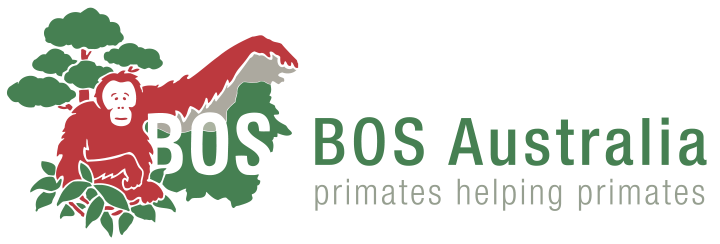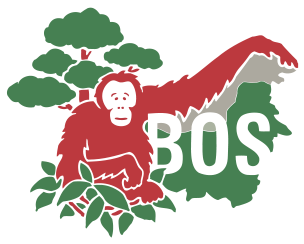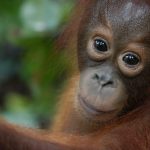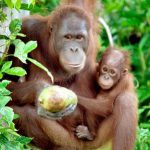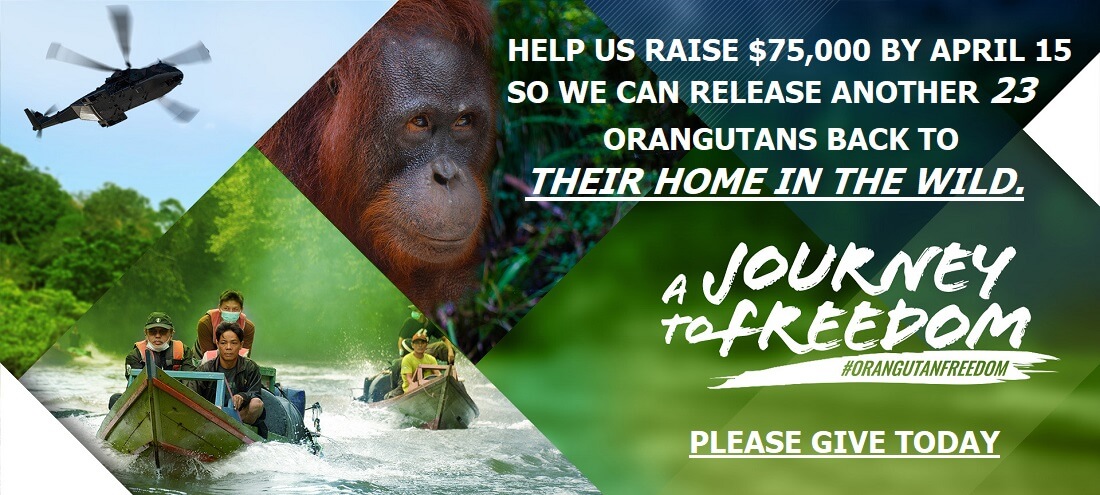A NEW CHAPTER FOR SIX ORANGUTANS

April 23, 2025, marked a historic moment in Indonesia’s orangutan conservation efforts. The Ministry of Forestry of the Republic of Indonesia, the East Kalimantan Natural Resources Conservation Agency (BKSDA), and the Borneo Orangutan Survival (BOS) Foundation, supported by Riau Andalan Pulp and Paper (RAPP), successfully released six orangutans from the Samboja Lestari Rehabilitation Centre into the Kehje Sewen Forest. This effort was not merely a relocation but a journey full of struggles, hopes and dedication to ensure this iconic species’s survival in its natural habitat.
Meticulous preparations
The release process began with medical preparations. Our veterinary team sedated the six orangutans before our experienced technicians carefully transferred them into transport cages. The release team conducted all preparations with great attention to detail, ensuring the well-being of the orangutans during the long and challenging journey ahead. This thoroughness was crucial for safeguarding the orangutans and the entire team’s safety.
On the afternoon of April 22, 2025, Mr Raja Juli Antoni, the Minister of Forestry of the Republic of Indonesia, officially flagged off the release team. The journey with six orangutans then began. Throughout the trip, the team made routine stops every two hours to check on the orangutans, offering fresh fruits, drinking water, and ensuring their comfort.

After the final medical check, the technicians carefully place the orangutans into their transport boxes.
From road to river
The road trip took approximately 12 hours before the team arrived at Muara Wahau around 2:25 AM WITA. After a short rest and a briefing session, the journey continued to the river dock, where the team crossed using a kelotok (motorized boat) to the designated release points within the Kehje Sewen Forest. Before crossing, each transport cage was equipped with flotation devices to guarantee the orangutans’ safety. Fortunately, the crossing took only about five minutes.
Celebrating Freedom
Deep in the forest, the long-awaited moment had arrived. The team began to open the transport cages one by one. Mori was the first orangutan to eagerly step out, embracing her newfound freedom. Next was Bugis, who appeared mesmerized by his surroundings as he exited his cage. Shortly afterwards, Mori and Bugis were copulating, indicating a successful adaptation to their new environment.
BOS had released Mori into the Kehje Sewen Forest in 2019. However, due to a decline in her health caused by melioidosis, she had to return to the rehabilitation centre for medical treatment. Now fully recovered, Mori was ready to return to her true home in the wild.
- The journey to freedom starts on the road…
- …continues by boat on a river…
- …and ends at the release site in the forest.
Cage opening by the Minister
Next to be released was Mikhayla, whose cage was opened personally by the Minister of Forestry. Her story of resilience is remarkable; she had been rescued from a mining area in a malnourished state. After months of recovery at the Samboja Lestari Rehabilitation Centre, she was finally ready to return to a safer and more suitable environment. As soon as her transport cage opened, Mikhayla leapt out energetically and swiftly climbed the nearest tree.
At the last release point, Siti and Uli stepped into their new lives of freedom. Siti eagerly dashed out of her cage while Uli took a more measured approach, confidently exploring his surroundings. The last cage contained Sie-Sie, a male orangutan with distinctive cheek pads. Upon his release, Sie-Sie showed signs of aggression, reflecting the stress he had experienced during his journey. Fortunately, our technicians managed the situation and avoided confrontation, ensuring a safe release for him. Each orangutan displayed unique reactions as their cages opened, highlighting the success of their extensive rehabilitation process.
Reflection in the forest
That evening, the entire release team gathered at Camp Nles Mamse to thoroughly evaluate every stage of the activity, from departure to release. They reviewed and analyzed the challenges encountered and made recommendations for future releases.
This evaluation is a vital aspect of our commitment to ensuring that all conservation efforts are conducted to the highest standards, enhancing the chances of survival of released orangutans in the wild.
The period following their release is when our Post-Release Monitoring (PRM) team plays a crucial role. They ensure that the released orangutans adapt well to their new environment for at least a month before they eventually venture deeper into the forest.
This release operation not only ran smoothly but also served as a powerful reminder that hard work, collaboration, and dedication are key to saving this vital species. The spirit forged during this release will continue to fuel our long-term mission to protect orangutans and their natural habitat.
Learn more about our orangutan conservation work here.
